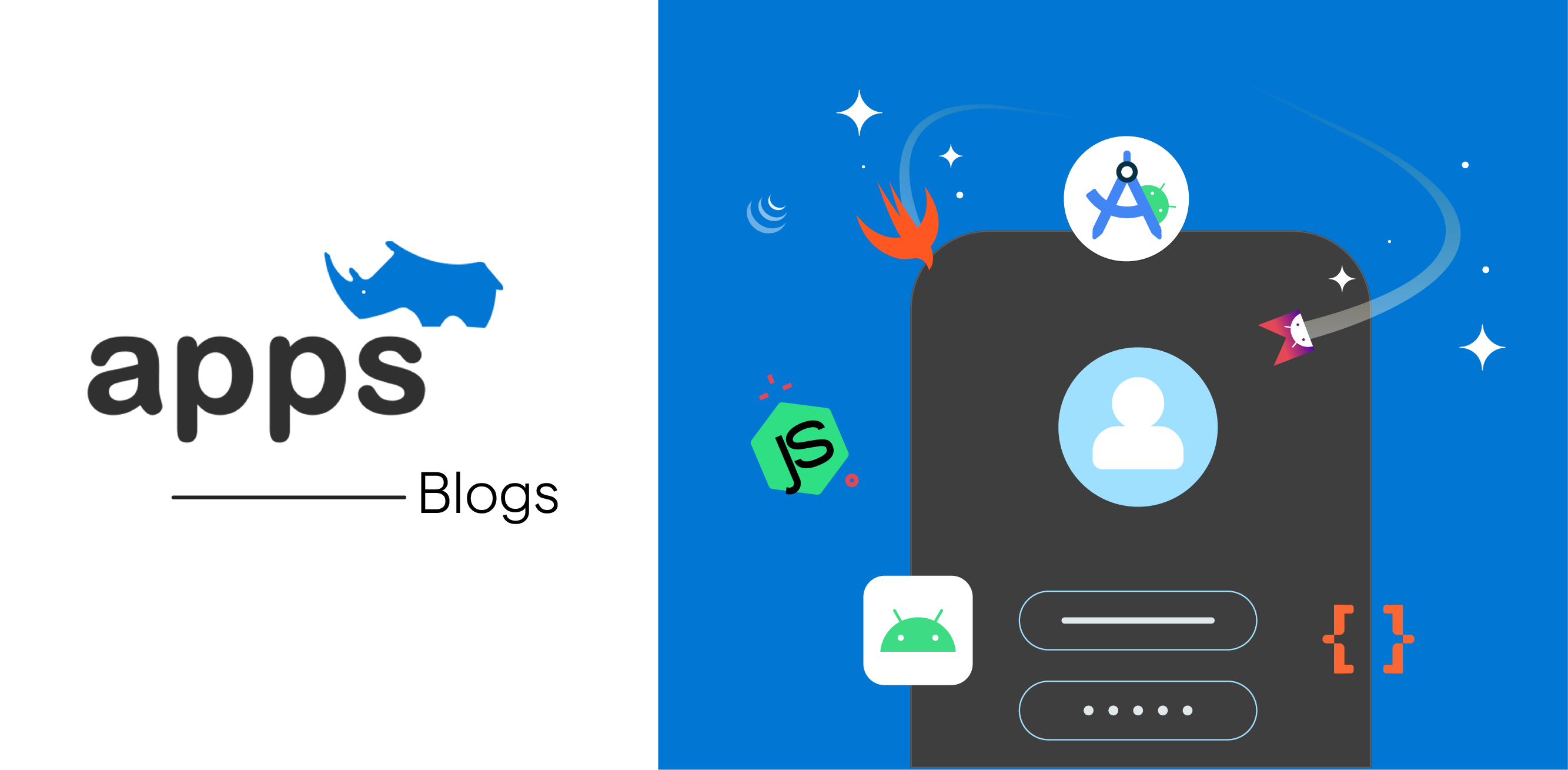- 10 best no-code app builder software in 2025
- What are the no-code development platform selection criteria?
- How to choose no-code development platforms?
- Conclusion
- Frequently Asked Questions (FAQs)
Table of Contents
10 Best No Code App Development Platforms & Builders In 2025

Building apps is no longer limited to expert coders. No code app development platforms make it easy for businesses to design and launch apps without months of complex programming.
With features like drag-and-drop builders, ready-made templates, and powerful integrations, these platforms cut costs, save time, and open app development to startups, entrepreneurs, and enterprises looking for rapid digital solutions.
This guide explores the 10 best no-code app development platforms in 2025, helping you choose the right one to meet your business and growth goals.
10 best no-code app builder software in 2025
| Tool | Best For | Standout Feature | Pricing |
|---|---|---|---|
| AppsRhino | Fast, scalable custom app builds across iOS, Android, and Web | Drag-and-drop builder with custom API integrations | Starts at $14.99/month |
| Webflow | Designers creating professional, pixel-perfect websites | Visual design control + CMS with code export | Free plan, Paid plans from $14/month |
| Flutterflow | Quick, cross-platform mobile apps with Firebase | Native Firebase integration for real-time backend | Free plan, Paid plans from $30/month |
| Adalo | Brand-focused mobile apps with automation | Built-in database + Zapier integrations | Free plan, Paid plans from $36/month |
| Glide | Spreadsheet-driven mobile apps & prototypes | Turns Google Sheets into fully functional apps | Free plan, Paid plans from $25/month |
| AppSheet | Enterprise apps with offline and Google Workspace support | No-code workflow automation + cloud integration | Free plan, Paid plans from $5/user/month |
| Bettermode | Community platforms and content-driven apps | Built-in CMS with multilingual support | Free plan, Paid plans from $19/month |
| Appgyver | Visual-heavy apps on a lean budget | Responsive UI builder + large template library | Free for individuals and small businesses |
| Bravo Studio | Design-first mobile apps from Figma/XD | Direct Figma and Adobe XD integration | Free plan, Paid plans from $19/month |
| Thunkable | Beginners and small teams building mobile apps | Easy drag-and-drop components + cross-platform publishing | Free plan, Paid plans from $15/month |
AppsRhino

AppsRhino is a powerful no-code platform designed to help businesses build custom apps quickly across mobile and web. It offers a simple drag-and-drop builder, pre-built templates, and integration support that allow even non-technical users to create scalable applications.
For startups and enterprises alike, AppsRhino reduces the time and cost of development significantly. It also provides flexibility for industries like healthcare, on-demand delivery, and retail, making it an all-in-one solution for companies that need custom digital platforms.
Features
- Drag-and-drop app builder for fast creation
- Pre-built templates for multiple use cases
- Easy API integrations for third-party tools
Pros
- Simple interface for non-technical users
- Affordable plans tailored to startups and enterprises
- Strong customer support and customization
Cons
- Limited learning resources compared to bigger players
- Smaller community base
- Some advanced features need technical setup
Best for: Fast, scalable custom app builds across iOS, Android, and web.
Webflow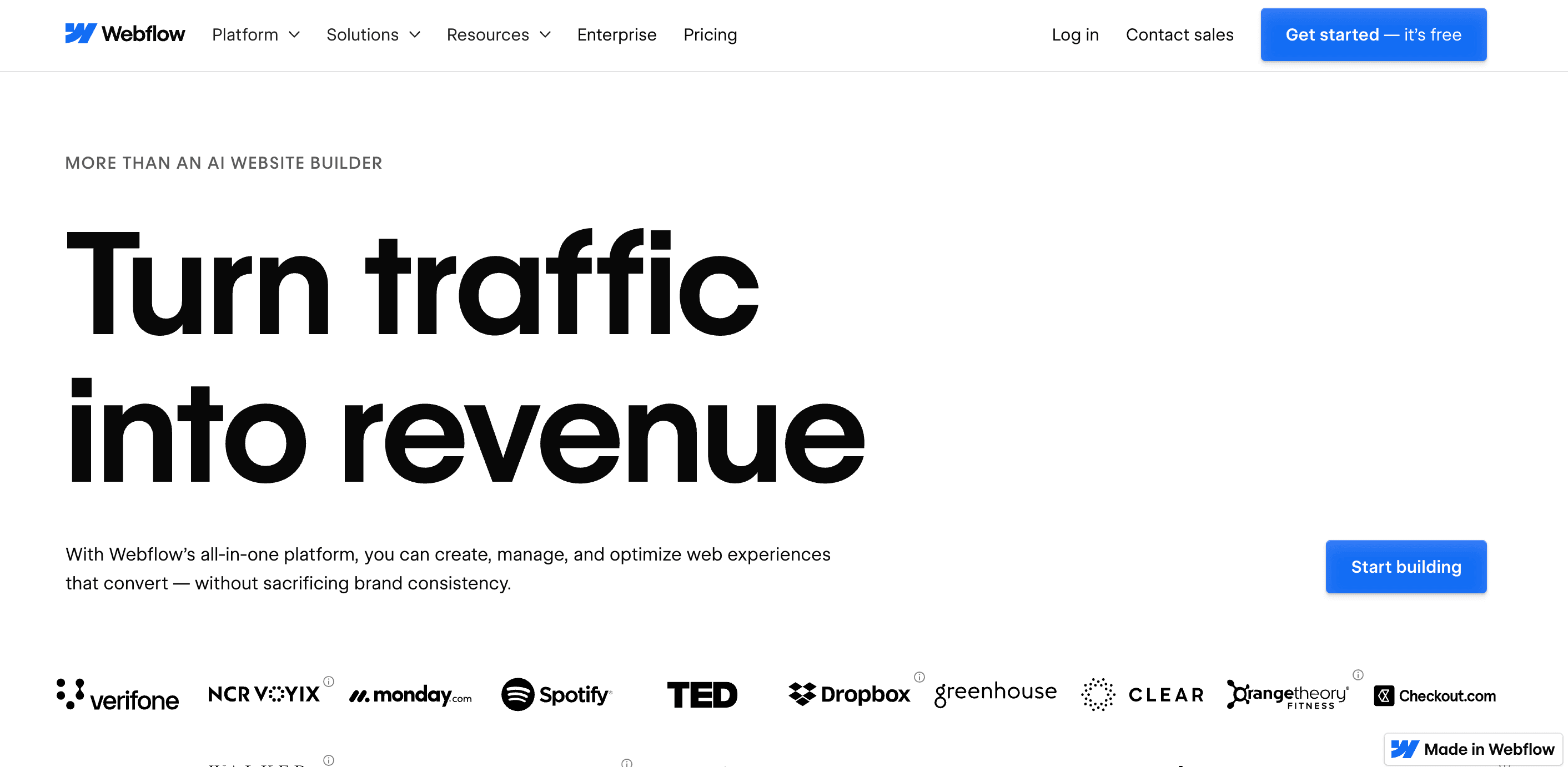
Webflow is a no-code platform designed for creating professional-grade websites without compromising design quality. It combines visual drag-and-drop tools with the power of custom code export, giving designers full control over every pixel.
Its CMS makes it suitable for content-heavy websites, blogs, and landing pages. Unlike most no-code builders, Webflow caters to advanced designers who want both creativity and scalability in one platform, especially for professional client projects.
Features
- Visual editor with pixel-perfect controls
- CMS for blogs, landing pages, and content sites
- Code export for developer customization
Pros
- Design flexibility and professional finish
- Strong CMS functionality
- Ability to handoff code to developers
Cons
- Higher pricing compared to other tools
- Requires design knowledge for best results
- Advanced features can be overwhelming
Best for: Designers aiming for high-quality, pixel-perfect websites.
Flutterflow

Flutterflow is a no-code tool built on Google’s Flutter framework, specializing in mobile app development. It provides an intuitive drag-and-drop interface, making it easier to create cross-platform apps for both Android and iOS.
Its strongest advantage lies in native Firebase integration, allowing teams to build backend-enabled applications quickly. Flutterflow is perfect for rapid prototyping, startups, and small businesses that want to validate ideas without heavy investment.
Features
- Drag-and-drop Flutter components
- Firebase integration for backend services
- Live preview of apps
Pros
- Fast prototyping for Android and iOS
- Native integration with Firebase
- Budget-friendly solution
Cons
- Limited options beyond Firebase
- Documentation could be improved
- Less suitable for large-scale apps
Best for: Quick, Firebase-backed mobile apps.
Suggested Reading: 7 Ways to Drive Success with No Code Integration Platforms!
Adalo

Adalo is a no-code mobile app development platform known for its flexibility and ease of use. It empowers businesses to build customized mobile apps with strong automation features and database management.
With direct publishing to iOS and Android, Adalo helps companies reduce time-to-market. It also integrates with Zapier, making it easy to automate workflows across business operations and improve efficiency without requiring coding knowledge.
Features
- Built-in database for app data
- Zapier integration for automation
- Publish to iOS and Android directly
Pros
- Flexible backend and workflows
- Easy multi-platform publishing
- Large ecosystem of pre-built components
Cons
- Pricing can be high for scaling
- Limited scalability for enterprise-level apps
- Customer support feedback is mixed
Best for: Brand-focused apps with strong automation workflows.
Glide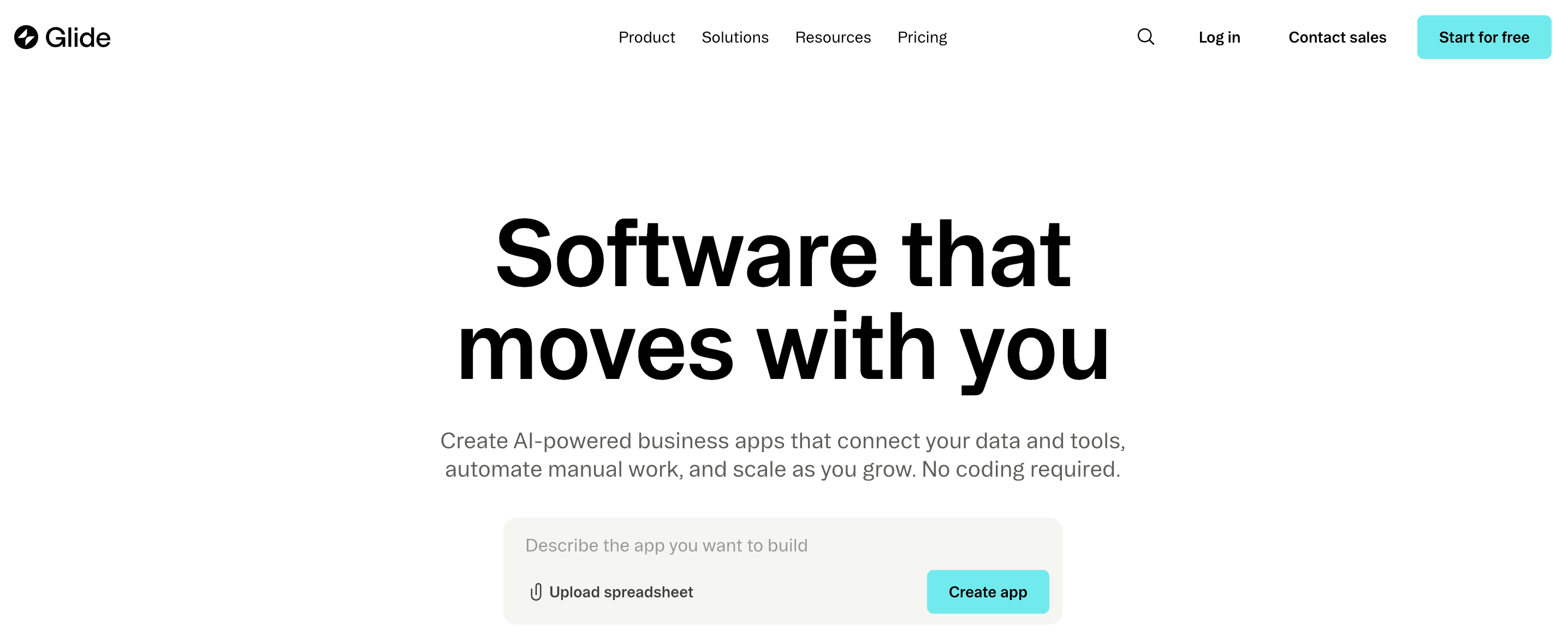
Glide specializes in turning Google Sheets into fully functional mobile apps. With its sheet-based backend, it allows businesses to create lightweight apps without any programming knowledge.
It’s particularly useful for small teams, educators, and startups that need quick prototypes or internal tools. Glide offers a balance of simplicity and functionality, though it may not support heavy, enterprise-grade apps.
Features
- Google Sheets as backend
- Built-in filters and data sync
- In-app messaging support
Pros
- Extremely beginner-friendly
- Quick app prototyping
- Automatic cloud backup
Cons
- Limited customization beyond templates
- Not suitable for app store publishing
- Weak landing page features
Best for: Spreadsheet-driven mobile apps built quickly.
Suggested Reading: 8 No-Code Android App Development Softwares in USA
AppSheet

AppSheet, part of Google Cloud, focuses on workflow automation and enterprise needs. It allows users to transform spreadsheets and databases into interactive apps with minimal effort.
Its offline support is a standout feature, making it suitable for industries like logistics, construction, or field services where connectivity may be inconsistent. AppSheet is ideal for process automation and business reporting.
Features
- Workflow automation with triggers
- Offline access support
- Integrates with Google Sheets and SQL
Pros
- Strong automation capabilities
- Works seamlessly offline
- Direct Google ecosystem integration
Cons
- User interface feels less intuitive
- Limited customization for design
- Performance slows with large datasets
Best for: Enterprise apps requiring offline support and Google data integration.
Bettermode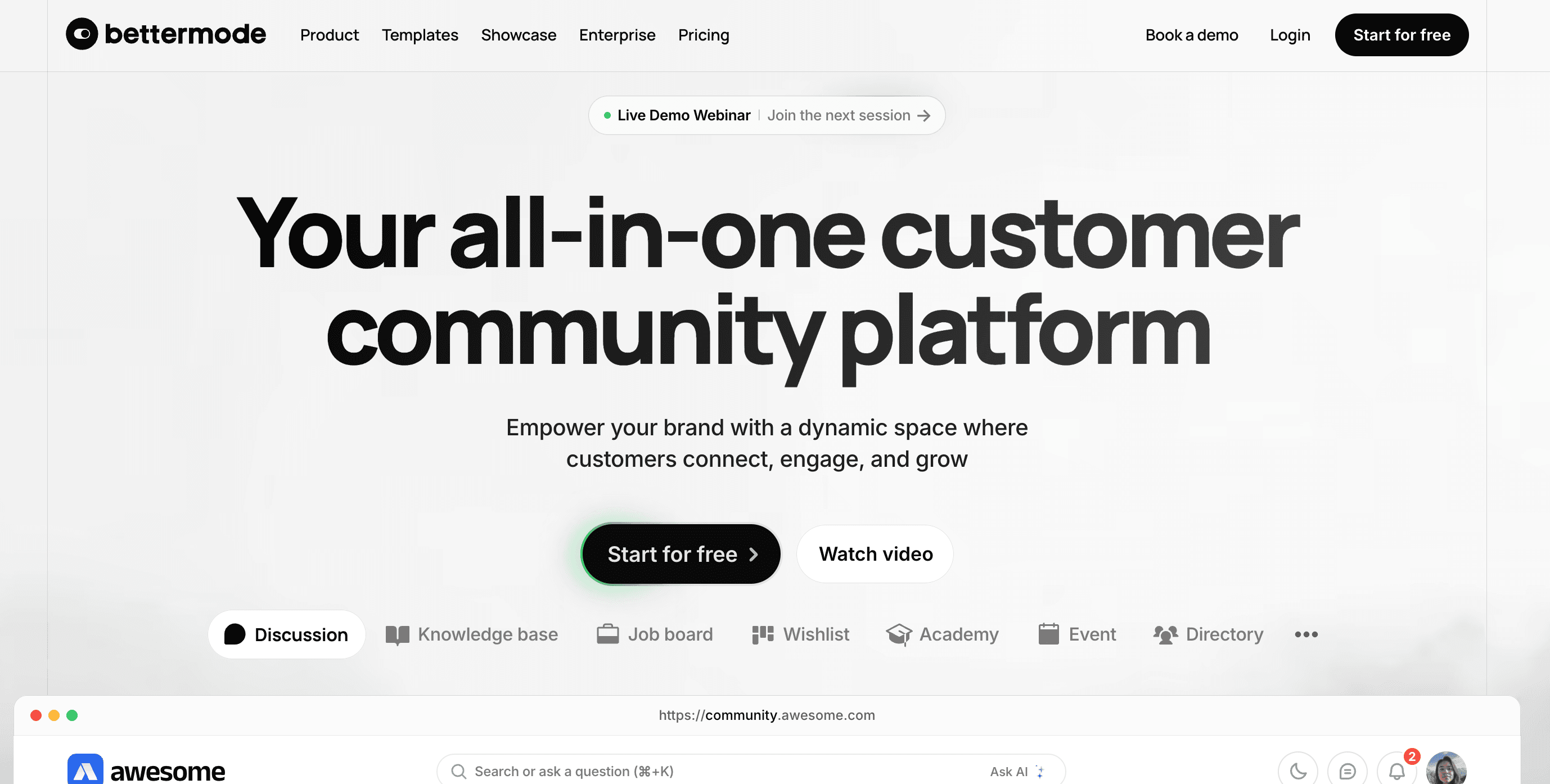
Bettermode is a no-code platform designed for building community platforms, forums, and microsites. It focuses on engagement and collaboration by offering multilingual support and a robust CMS.
Businesses and organizations use it to create branded communities, internal knowledge hubs, or customer engagement platforms. Its customization and content tools make it a good fit for community-driven products.
Features
- Built-in CMS for content management
- Multilingual support for global users
- Branding and design customization
Pros
- Free plan available
- Strong CMS features
- Multi-language interface
Cons
- Limited analytics compared to others
- Missing private messaging features
- Small third-party ecosystem
Best for: Building community platforms and content-heavy applications.
Appgyver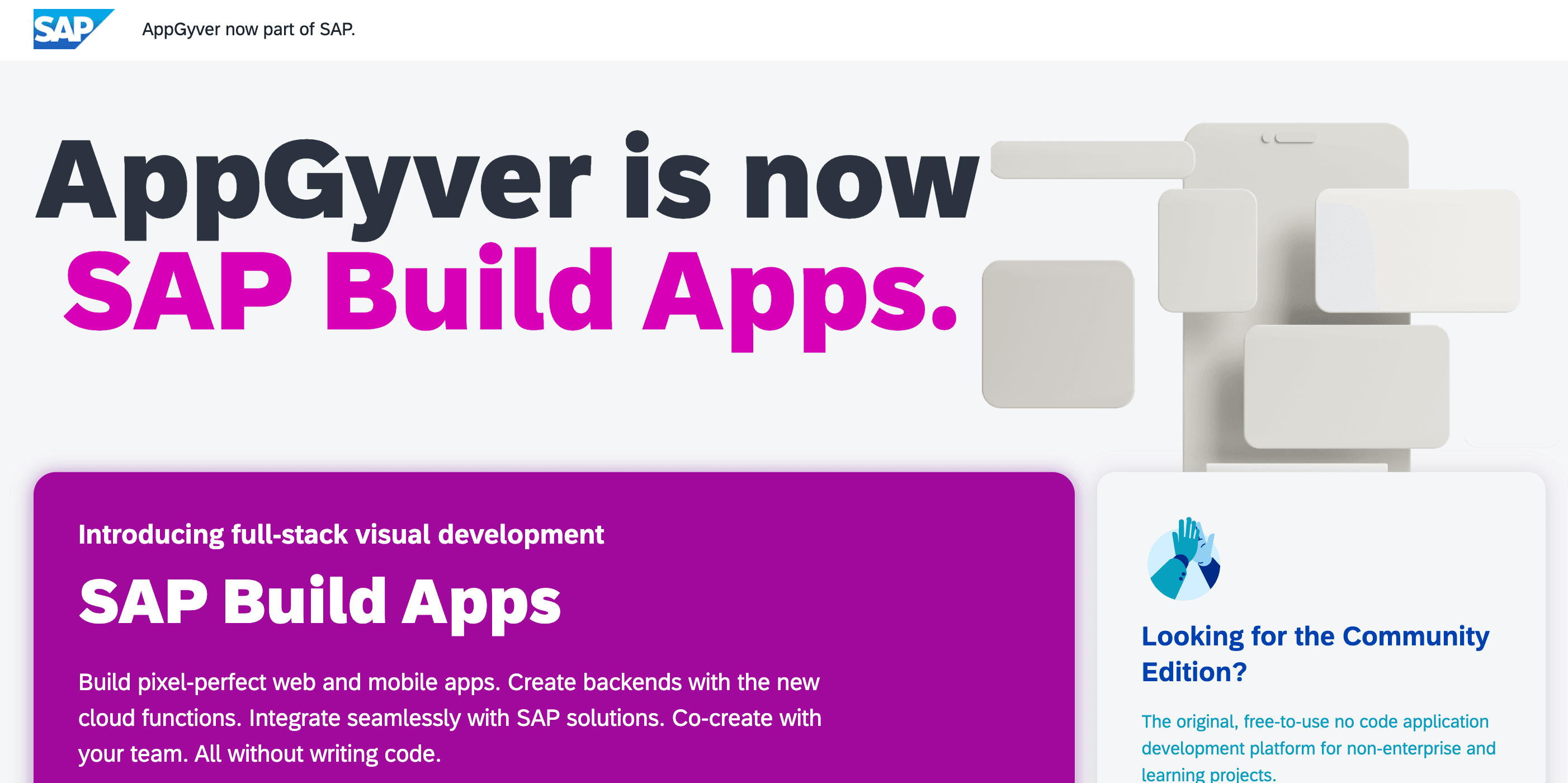
Appgyver is a robust no-code platform offering enterprise-grade app development at little to no cost. It features a wide range of responsive design tools and templates.
Its affordability makes it popular among startups and small teams. While it has a steep learning curve for beginners, it’s one of the most powerful free tools for creating cross-platform applications.
Features
- Responsive UI builder
- Large library of templates
- Adaptive design across devices
Pros
- Free for many use cases
- Strong design flexibility
- Supports cross-platform apps
Cons
- Not beginner-friendly for complex flows
- Documentation could be clearer
- Steeper learning curve for first-time users
Best for: Visual-heavy apps on a budget.
Bravo Studio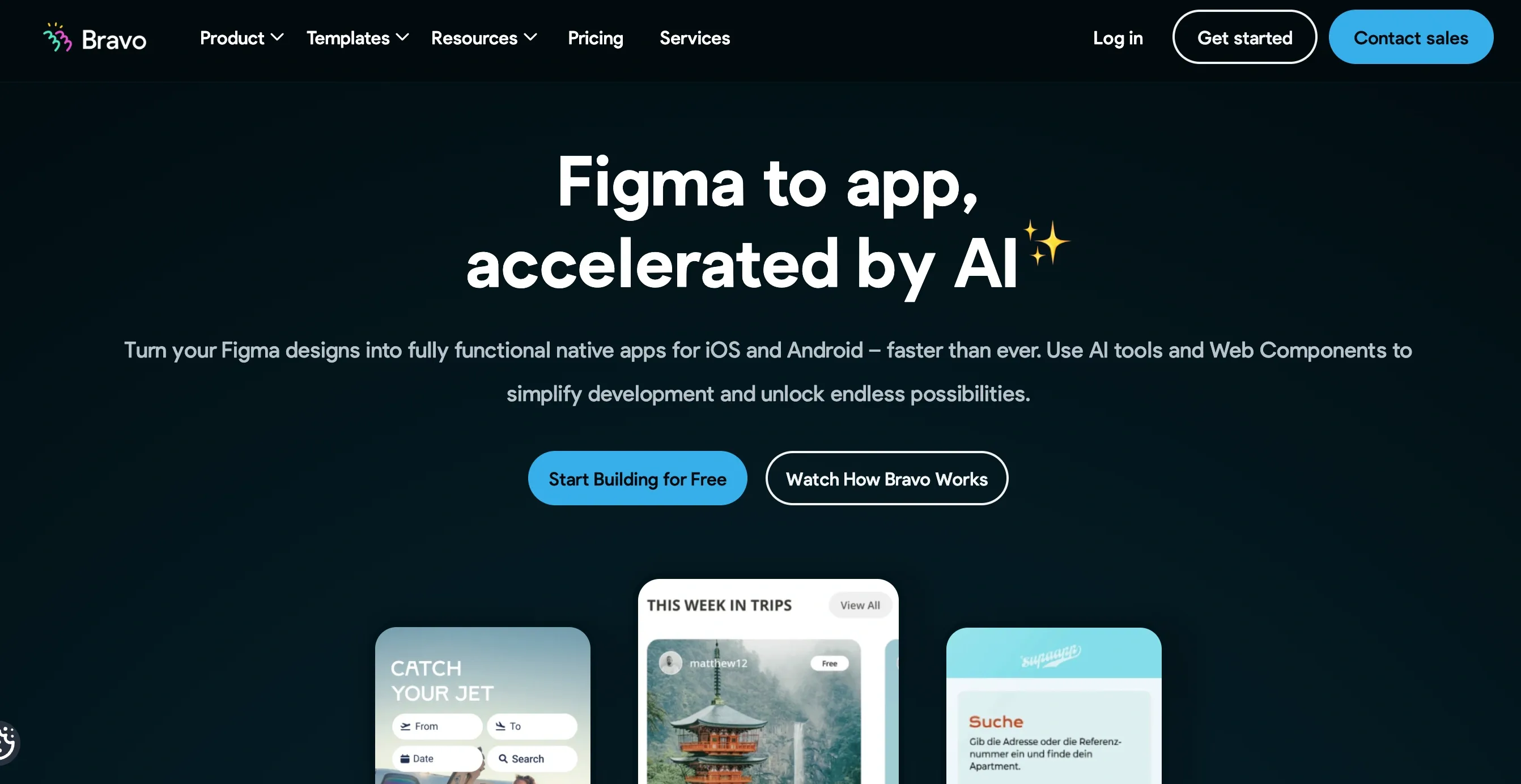
Bravo Studio is aimed at design-first workflows and integrates directly with Figma and Adobe XD. It enables teams to turn design prototypes into real apps.
This tool is highly valued by creative professionals who want to preserve design fidelity in mobile app builds. It bridges the gap between UI/UX design and functional app development.
Features
- Figma and Adobe XD integration
- Live app updates
- CRM and backend connections
Pros
- Seamless workflow from design tools
- Supports live prototyping
- Flexible backend integrations
Cons
- Not beginner-friendly
- Heavier reliance on design expertise
- Backend features need additional setup
Best for: Design teams building apps directly from Figma.
Thunkable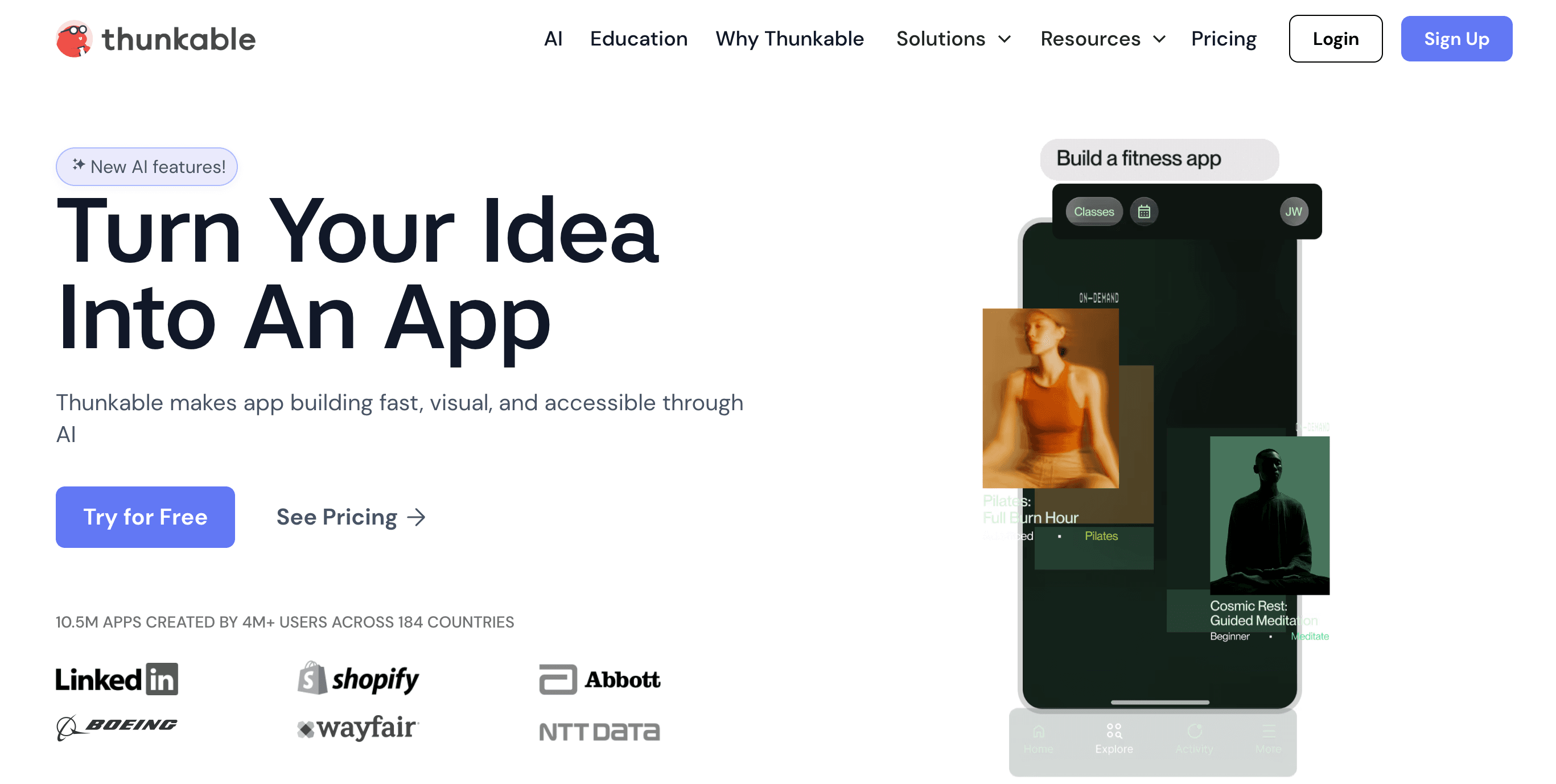
Thunkable is an easy-to-use no-code platform built for beginners and small businesses. Its drag-and-drop components and community-driven support make it ideal for mobile app creation.
It offers Android and iOS compilation with a straightforward interface, making it great for hobbyists, educators, and teams launching basic apps quickly.
Features
- Drag-and-drop mobile components
- Cross-platform compilation for Android/iOS
- Active support community
Pros
- Easy for non-technical beginners
- Strong community support
- Reliable for mobile-first projects
Cons
- Basic UI compared to others
- Limited backend/database support
- Paid plans are not ideal for very small budgets
Best for: Beginners and small teams creating simple mobile apps.
What are the no-code development platform selection criteria?
Choosing the right no-code development platform in 2025 depends on how well it aligns with your business and technical needs. The main criteria include ease of use, scalability, integration options, customization capabilities, pricing flexibility, and security compliance. A platform should allow even non-technical users to build apps quickly while offering advanced features for developers who want deeper control.
You should also look at the platform’s template variety, automation features, and community support. A platform backed by strong customer support and a growing ecosystem ensures smoother development and quicker troubleshooting. AI-powered features, analytics, and future-proof technology are now essential considerations to ensure your apps remain relevant in a competitive market.
How to choose no-code development platforms?
Start by defining your goals—whether it’s building a mobile app, automating workflows, or creating a web solution. Next, evaluate platforms on usability, scalability, integration support, and cost structure. A good platform should simplify development with drag-and-drop tools and still allow advanced customization for unique business needs.
Check case studies, customer feedback, and available support before making a decision. Solutions like AppsRhino provide strong AI-driven automation, industry-ready integrations, and flexible pricing, making them an ideal choice for businesses and developers aiming for faster growth. By comparing features against your requirements, you can confidently pick a platform that ensures efficiency, ROI, and long-term success.
Conclusion
So, there you have it, a long list of no-code app development platforms and their advantages and disadvantages, which will help you choose the best as per your business’s unique requirements.
Before choosing the no-code app development platform, make sure to compare its technical aspects, the UI features, the workspace,ce especially whether it is user-friendly for no-coding users or not, its community and support system, previous user reviews on various co-pilot websites, etc.
Also, do not forget to check the different pricing plans offered by these platforms and compare them thoroughly beforehand to make sure that they match your budget requirements.
After such a thorough examination, make your choice for the no-code app development platform that will suit your budget and satisfy your targeted end users.
Best of luck with your no-code app development endeavors!
Suggested Reading: Why is AppsRhino the Best No-Code App Builder for You?
Frequently Asked Questions (FAQs)
What is the best no-code app development platform?
The best no-code app development platform is AppsRhino, offering scalability, integrations, and customization to build user-friendly apps without coding skills.
Can I build an app with no-code?
Yes, you can build a full-featured app with no-code platforms like AppsRhino, using drag-and-drop tools, templates, and integrations easily.
Is Figma a no-code platform?
No, Figma is a design tool, not a no-code platform. It’s mainly for UI/UX design, not building functional applications.
What are the trends in No-Code Development Platforms?
Trends include AI-powered app builders, workflow automation, low-code integration, enterprise adoption, cross-platform apps, and faster go-to-market strategies with platforms like AppsRhino.
What Are No-Code Development Platforms?
No-code development platforms let you build apps using visual interfaces and pre-built components, eliminating complex coding and enabling faster, cost-effective digital solutions.
Table of Contents
- 10 best no-code app builder software in 2025
- What are the no-code development platform selection criteria?
- How to choose no-code development platforms?
- Conclusion
- Frequently Asked Questions (FAQs)



